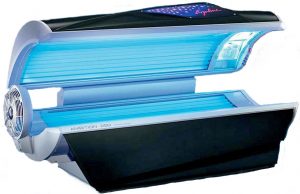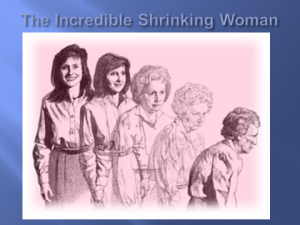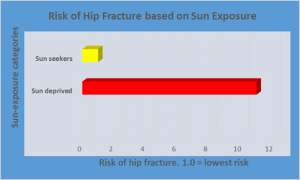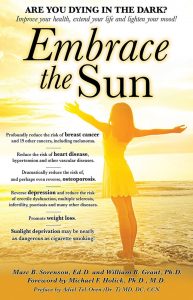 Parkinson’s disease prevented by sunlight. By Marc Sorenson, EdD
Parkinson’s disease prevented by sunlight. By Marc Sorenson, EdD
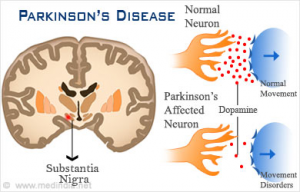 Parkinson’s disease is a common nerve disease, and it is caused by deterioration of brain cells that produce dopamine. It is characterized by tremors, muscle rigidity, shuffling gait, slow speech, and a mask-like facial expression. In addition, even simple movements may become difficult for the person suffering from the disease. And, the disease is a killer that takes the lives of 14,593 per year.[1] So how do we prevent it? In this blog, I will explain the disease, show what the research says about sunlight, and make recommendations for prevention.
Parkinson’s disease is a common nerve disease, and it is caused by deterioration of brain cells that produce dopamine. It is characterized by tremors, muscle rigidity, shuffling gait, slow speech, and a mask-like facial expression. In addition, even simple movements may become difficult for the person suffering from the disease. And, the disease is a killer that takes the lives of 14,593 per year.[1] So how do we prevent it? In this blog, I will explain the disease, show what the research says about sunlight, and make recommendations for prevention.
Research points out that Sun exposure is the key to prevention of Parkinson’s disease.
Several studies have shown that there is a close association between sunlight exposure, blood 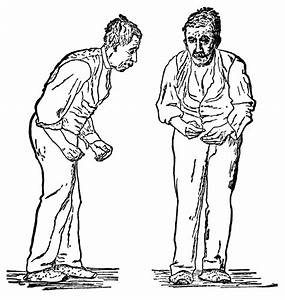 vitamin D levels and Parkinson’s. First of all, one paper showed that when vitamin D levels are low, there is a tripling of the risk.[2] Another study from China demonstrated that persons with highest levels of blood vitamin D had a 48% decrease in risk. And, that same research demonstrated that those receiving the greatest sun exposure had about a 47% decrease in risk.[3] So, based on those findings, one might think that vitamin D supplements could prevent the disease. Yet, that thought is erroneous. Sun exposure is the direct key for preventing this debilitating disease.
vitamin D levels and Parkinson’s. First of all, one paper showed that when vitamin D levels are low, there is a tripling of the risk.[2] Another study from China demonstrated that persons with highest levels of blood vitamin D had a 48% decrease in risk. And, that same research demonstrated that those receiving the greatest sun exposure had about a 47% decrease in risk.[3] So, based on those findings, one might think that vitamin D supplements could prevent the disease. Yet, that thought is erroneous. Sun exposure is the direct key for preventing this debilitating disease.
Vitamin D supplements do not stop Parkinson’s, so how can that be?
Recent research, a systematic review and meta-analysis, is most noteworthy. And it explains this interesting paradox.[4] It showed that sun exposure was significantly associated with a reduced risk of Parkinson’s. Especially relevant is the fact that those persons with plenty of sun exposure had only 1/50 the risk of Parkinson’s. That is an astounding figure! However, although vitamin D supplements were effective in raising vitamin D levels, they had no significant benefits for Parkinson’s disease.
Vitamin D and sun exposure are not the same.
While sun exposure and supplements both raise vitamin D levels, supplements are no help to Parkinson’s sufferers. Hence, we must look beyond vitamin D for an answer. Sun exposure leads to the production of vitamin D, but it also leads to the production of dopamine. Dopamine, as previously mentioned, is a vital chemical for the brain as regards Parkinson’s. Vitamin D is a marvelous, vital photoproduct and is due to sun exposure. It is vital for human health. However, it appears that vitamin D does nothing for Parkinson’s. Most of all, we must remember that sun exposure produces many essential photoproducts beyond vitamin D.
Vitamin D blood levels, in the case of Parkinson’s and some other diseases, are simply surrogate measurements of sun exposure. We simply cannot substitute a vitamin D pill for sun exposure and expect to reap all the benefits of sunlight. The “holistic” sun will never be supplanted by a capsule. The sun stimulates the production of vitamin D, dopamine, nitric oxide, serotonin, endorphins, brain-derived neurotropic factor (BDNF) and other photoproducts. And, all of these photoproducts play their roles in human health. For some diseases, vitamin D is vital for prevention. In others such as Parkinson’s, it is just along for the ride.
The takeaway regarding sun exposure and Parkinson’s.
To help prevent this disease, be sure to obtain plenty of non-burning sunlight. And In lieu of that, when there is no sunlight available, use a low-pressure sunbed (tanning bed) in a salon. Always remember not to burn. For more information, read my new book, Embrace the Sun, available at Amazon: https://www.amazon.com/Embrace-Sun-Marc-B-Sorenson/dp/069207600X 
Happy sunning!
[1] ttps://www.rightdiagnosis.com/p/parkinsons_disease/deaths.htm
[2] Knekt P, Kilkkinen A, Rissanen H, Marniemi J, Sääksjärvi K, Heliövaara M. Serum vitamin D and the risk of Parkinson disease. Arch Neurol. 2010 Jul;67(7):808-11.
[3] Wang J, Yang D, Yu Y, Shao G. Wang Q. Vitamin D and Sunlight Exposure in Newly-Diagnosed Parkinson’s Disease. Nutrients 2016;8:142.
[4] Zhou Z, Zhou R, Zhang Z, Li K. The Association between Vitamin D Status, Vitamin D Supplementation, Sunlight Exposure, and Parkinson’s disease: A Systematic Review and Meta-Analysis. Med Sci Monit. 2019 Jan 23;25:666-674.
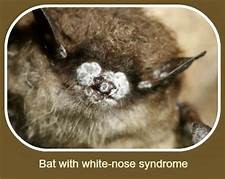 Should a bat sunbathe?
Should a bat sunbathe?
Last summer, while my friends and I were about to enter Lehman Caves, located in Nevada’s Great Basin National Park. A park ranger asked asked us if any of us had been in other caves anywhere in the U.S. The ranger said that although Lehman Caves had not yet been effected, there was a rapidly-spreading disease, suffered by cave-dwelling bats, which was decimating the bat population across the country. A fungus caused the disease that turned the bats’ noses white. Hence, it was accurately called “white nose syndrome.” None of our group had been in any caves in the recent past and therefore were pronounced clean. We then had a wonderful tour through a spectacular cave.
Sunbeds for bats?
This experience made a memorable impact on me. I recently discovered, to my surprise, that white-nose syndrome could be stopped by using sunbeds—bat sunbeds that is.[1] A spectrum of light emitted from both sunlight and sunbeds (UVB). UVB causes tanning and is also capable of damaging the DNA of the fungi that cause the disease, thereby destroying them. So, the treatment is to fit the bats’ cave entrances with UVB lamps. Researchers from the University of Wisconsin suggested this idea.
Sunbeds are anti-fungal.
Furthermore, this is not the first research to point out the anti-fungal nature of UVB light. Research has shown that sunlight may be good for decontaminating socks and feet, much as it decontaminates our bat friends. Scientists tested socks infected with the fungus causing tinea pedis (“athlete’s foot”), a chronic skin disease. The objective of the research was “to evaluate the effectivity of sun exposure in reducing fungal contamination in used clothing.” Fifty-two socks, proven by fungal culture to be contaminated by patients with tinea pedis, were studied. The samples were divided into two groups: Group A underwent sun exposure for 3 consecutive days. Group B remained indoors. Fungal cultures were performed at the end of each day.[2] It is most noteworthy that elimination of the fungal cultures was significant in the sun-exposure group, but not the indoor group.
When I was young, my mother washed our clothing and hung it on a clothesline. It had full exposure to sunlight. I won’t forget how fresh the clothing (including the socks) smelled after ward. I expect that as a result, any fungi or bacteria were eliminated, along with the resultant odor. Had the clothing remained inside it would have likely become malodorous.
In conclusion, the message is that both we and the bats can benefit from exposure to UVB light. It is especially relevant that bats are a vitally important part of the ecosystem; therefore we should protect them any way we can. Sun exposure and sunbed exposure, when used in a safe, non-burning manner, will help both the health and the environment. Safely embrace the sun!
[1] http://www.cbc.ca/news/canada/british-columbia/bats-white-nose-syndrome-uv-treatment-fungus-1.4515314.
[2] Amichai B, Grunwald M, Davidovici B, Shemer A. Sun as a disinfectant. Isr Med Assoc J. 2014 Jul;16(7):431-3.
Is the sunbed a Gianus Bifrons (two-headed god)?
Sunbeds, Good or bad?
Recent research comes to the conclusion that indoor tanning is a Gianus Bifrons,[1] which is interpreted as a two-headed god. One head, according to these researchers, is an increase in various skin cancers (a dubious claim). The other head is the ability of sunbeds to produce large quantities of vitamin D, increasing serum vitamin D concentrations up to two fold. In addition, this increase in vitamin D, they believe, could lead to a decrease in myriad diseases.
The authors of the paper state the following: “Therefore, some favorable effects [of tanning beds] against the risk of developing many human diseases, including non-skin cancers, cannot be excluded at first glance, although they may not be only linked to [higher] vitamin D status.” They also go on to suggest that more research should be performed to determine if the unfavorable effects of indoor tanning on skin cancers may be outweighed by the favorable benefits of amelioration of low vitamin D levels.
This research ignored many research studies showing that regular, non-burning sun exposure is protective against melanoma. In my upcoming book, Embrace the sun, about 14 different research studies are cited. All of these studies demonstrate a positive effect of sun exposure. There are also positive effects of sun exposure and sunbed exposure, beyond the ability to produce vitamin D. Nitric oxide (NO) is produced by both. NO is a vasodilator that lowers blood pressure and reduces the risk of heart disease.
No increase in melanoma!
Perhaps the most important study to differentiate between the positive effects and negative effects of sunbed exposure is this one: A 20-year Swedish study demonstrated that women who used sunbeds were 23% less likely to die from any cause than women who did not use them.[2] This study also showed no increase in melanoma after the 20-year period.
So, what more do we need to know about the pros and cons of sunbed use?
Here are a few more positive effects of sunbeds on human health:
- Sunbed use reduces the risk of type 2 diabetes.[3]
- Sunbed use strengthens bone.[4]
- Sunbed use controls psoriasis and eczema.[5]
- Sunbed use reduces chronic pain.[6], [7]
- Sunbed use may help unborn children.[8]
- Sunbed use reduces the risk of clots.[9]
- Sunbed use is associated with lower breast-cancer risk.[10]
- Sunbed use reduces the risk of death.[11]
[1] Giuseppe Lippi*, 1, Gianfranco Cervellin†, Elisa Danese. Indoor Tanning a Gianus Bifrons:
Vitamin D and Human Cancer. Advances in Clinical Chemistry 2017;20:1-16
[2] Lindqvist PG, Epstein E, Landin-Olsson M, Ingvar C, Nielsen K, Stenbeck M, Olsson H. Avoidance of sun exposure is a risk factor for all-cause mortality: results from the Melanoma in Southern Sweden cohort. J Intern Med. 2014 Jul;276(1):77-86.
[3] P.G. Lindqvist, H. Olsson, M. Landin-Olsson, Are active sun exposure habits related
to lowering risk of type 2 diabetes mellitus in women, a prospective cohort
study?, Diabetes Res. Clin. Pract. 90 (2010):109-114.
[4] Tangpricha V, Turner A, Spina C, Decastro S, Chen TC, Holick MF. Tanning is associated with optimal vitamin D status (serum 25-hydroxyvitamin D concentration) and higher bone mineral density. Am J Clin Nutr 2004;80:1645-49.
[5] Radack KP, Farhangian ME, Anderson KL, Feldman SR. A review of the use of tanning beds as a dermatological treatment. Dermatol Ther (Heidelb). 2015 Mar;5(1):37-51.
[6] Kaur M, Feldman SR, Liguori A, Fleischer AB Jr. Indoor tanning relieves pain. Photodermatol Photoimmunol Photomed. 2005 Oct;21(5):278.
[7] Taylor SL, Kaur M, LoSicco K, Willard J, Camacho F, O’Rourke KS, Feldman SR. Pilot study of the effect of ultraviolet light on pain and mood in fibromyalgia syndrome. J Altern Complement Med. 2009 Jan;15(1):15-23.
[8] Bukhari, M. Quoted in London Times April 27, 2008.
[9] Lindqvist PG, Epstein E, Olsson H. Does an active sun exposure habit lower the risk of venous thrombotic events? A D-lightful hypothesis. J Thromb Haemost. 2009 Apr;7(4):605-10.
[10] Yang L, Veierød MB, Löf M, Sandin S, Adami HO, Weiderpass E. Prospective study of UV exposure and cancer incidence among Swedish women. J Intern Med. 2014 Jul;276(1):77-86
[11] Lindqvist PG, Epstein E, Landin-Olsson M, Ingvar C, Nielsen K, Stenbeck M, Olsson H. Avoidance of sun exposure is a risk factor for all-cause mortality: results from the Melanoma in Southern Sweden cohort. J Intern Med. 2014 Jul;276(1):77-86.
Sun exposure and health… by Dr. Marc Sorenson, Sunlight Institute…
Lack of vitamin D, which is produced by sun exposure, leads to rickets, osteoporosis, osteomalacia and other bone diseases. In addition, research well after the first discovery of vitamin D has shown that vitamin D deficiency and sunlight deprivation also lead to many cancers, heart disease and multiple additional maladies. Now, as the world has modernized, the population is moving indoors, and even in the areas that are sunny throughout the year, sunlight exposure and vitamin D deficiency is increasing, both in rural and urban populations. The bones become so weakened without regular sun exposure, that the slightest movement may cause a fracture. As an example, the mother of an acquaintance of mine—a woman who avoided the sun—turned over in bed one night and broke her hip. Osteoporosis often destroys all quality or life for those who suffer it.
The importance of the sun in maintaining and producing strong bones has been known since antiquity. Dr. Richard Hobday, author of The Healing Sun, writes the following comments along with a history in an online article.[1] “Traditionally, sunlight deprivation has been linked with weak or brittle bones. One of the earliest references to this was made more than two thousand years ago by the Greek historian Herodotus (480-425 BC), who noted a marked difference between the remains of the Egyptian and Persian casualties at the site of battle of Pelusium which took place in 525 BC:
‘At the place where this battle was fought I saw a very odd thing, which the natives had told me about. The bones still lay there, those of the Persian dead separate from those of the Egyptian, just as they were originally divided, and I noticed that the skulls of the Persians were so thin that the merest touch with a pebble will pierce them, but those of the Egyptians, on the other hand, are so tough that it is hardly possible to break them with a blow from a stone. I was told, very credibly, that the reason was that the Egyptians shave their heads from childhood, so that the bone of the skull is indurated by the action of the sun — this is why they hardly ever go bald, baldness being rarer in Egypt than anywhere else. This, then, explains the thickness of their skulls; and the thinness of the Persian’s skulls rests upon a similar principle: namely that they have always worn felt skull -caps, to guard their heads from the sun.’
Herodotus, ‘The Histories’”
And here is a perhaps the transcendent study on hip fracture and sun exposure: research in Spain showed that women who were sun seekers had only about one-eleventh the risk of hip fracture as those who stayed indoors[2] (See the chart below).
That is very powerful evidence of the efficacy of sun in preventing weak bones. In stark contrast to this research are studies done on women who completely avoid the sun and suffer from osteomalacia. Osteomalacia is a soft-bone disease known as adult rickets, resulting from severe vitamin D deficiency, which deficiency prevents bone from properly mineralizing. Women who seldom go outdoors, or who are nearly always fully covered with clothing, have an extremely high incidence of osteomalacia at a very young age, even if they live in geographical areas with abundant sunlight.[3] [4] If one is never exposed to the available sun, the sun will not be able to produce its beneficial effects on the body, so one may as well live at the North Pole.
Sunbed use also is associated with stronger bones and higher vitamin D levels. An excellent study compared 50 people who used sunbeds regularly with 106 who did not.[5] The sunbed group had 90% higher vitamin D, significantly higher bone density and lower PTH levels (high PTH levels are associated with lower bone mass). The users had healthful vitamin D levels of 46 ng/ml [115 nmol/L] compared to only 24 ng/ml [60 nmol/L] for those who did not regularly use sunbeds.
Scientists at one time believed that sunlight and vitamin D were good only for preventing rickets, osteoporosis and other bone weaknesses. That belief has been supplanted by myriad research studies that show the efficacy of both sun exposure and vitamin D repletion on protection against numerous additional diseases. Nevertheless, we should never forget the extraordinary, never-changing value of sun exposure to maintaining a strong skeleton well into old age.
[1]Richard Hobday. The Healing sun: Sunlight, Brittle Bones, and Osteoporosis. http://sunlightenment.com/the-healing-sun-sunlight-brittle-bones-and-osteoporosis/. (accessed February 5, 2016)
[2] Larrosa M, Casado E, Gómez A, Moreno M, Berlanga E, Ramón J, Gratacós J. Vitamin D deficiency and related factors in patients with osteoporotic hip fracture. Med Clin (BARC) 2008;130:6-9.
[3] Sahibzada AS, Khan MS, Javed M. Presentation of osteomalacia in Kohistani women. J Ayub Med Coll Abbottabad 2004;16:63-5
[4] Al-Jurayyan NA, El-Desouki ME, Al-Herbish AS, Al-Mazyad AS, Al-Qhtani MM. Nutritional rickets and osteomalacia in school children and adolescents. Saudi Med J 2002;23:182-85.
[5] Tangpricha V, Turner A, Spina C, Decastro S, Chen TC, Holick MF. Tanning is associated with optimal vitamin D status (serum 25-hydroxyvitamin D concentration) and higher bone mineral density. Am J Clin Nutr. 2004 Dec;80(6):1645-9.
Sun exposure. By Marc Sorenson, EdD…
Endometrial cancer, also called corpus uterine cancer, is a reproductive cancer that takes the lives of many women. There are 60,050 new cases yearly from endometrial cancer and there are 10,470 deaths. Like many cancers such as breast and prostate cancer, sun exposure may have remarkable protective effects that should not be ignored.
Endometrial cancer mortality rates were found to be strongly inversely correlated with sun exposure in Dr. William Grant’s ecological studies.[1] [2] Other research, using Spanish data, found an inverse correlation between endometrial cancer mortality and sun exposure assessed by using latitude as an index of sun exposure—higher latitude means less sun exposure, which means greater cancer risk.[3] Corroborating this finding was research from Sweden; this 15.5-year study showed a 20% decrease in the risk of endometrial cancer among women who sunbathed in the summer, and a 40% decrease in risk in those who used a sunbed more than three times per year.[4] When the data was adjusted for confounding factors such as body-mass index and physical activity, the decrease in the risk of endometrial cancer was 50%!
The takeaway from this information is this: Don’t be taken in by the anti-sun cabal. Read all the facts before making a decision. And, always take care not to burn, whether in the sun or in a sunbed.
[1] Grant WB. An estimate of premature cancer mortality in the U.S. due to inadequate doses of solar ultraviolet-B radiation. Cancer. 2002 Mar 15;94(6):1867-75.
[2] Grant WB, Garland CF. The association of solar ultraviolet B (UVB) with reducing risk of cancer: multifactorial ecologic analysis of geographic variation in age-adjusted cancer mortality rates. Anticancer Res. 2006 Jul-Aug;26(4A):2687-99.
[3]Grant, WB. An ecologic study of cancer mortality rates in Spain with respect to indices of solar UVB irradiance and smoking. Int J Cancer 2007;120:1123-28.
[4] Epstein E, Lindqvist PG, Geppert B, Olsson H. A population-based cohort study on sun habits and endometrial cancer Br J Cancer. 2009;101(3):537-40.

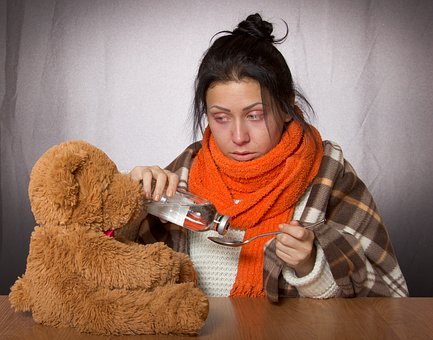
 d early fall, when I mostly worked on my father’s ranch. The sun blazed from dawn to dusk and I soaked it up. The work on our ranch was intense. We started those sunny days with morning feeding of animals, followed by irrigating, hauling hay and performing other outdoor tasks. Despite the long hours, I loved the sun, and it made the hard work worthwhile. Whenever possible, my shirt came off, and because of my deep tan, my friends called me “brown man.”
d early fall, when I mostly worked on my father’s ranch. The sun blazed from dawn to dusk and I soaked it up. The work on our ranch was intense. We started those sunny days with morning feeding of animals, followed by irrigating, hauling hay and performing other outdoor tasks. Despite the long hours, I loved the sun, and it made the hard work worthwhile. Whenever possible, my shirt came off, and because of my deep tan, my friends called me “brown man.”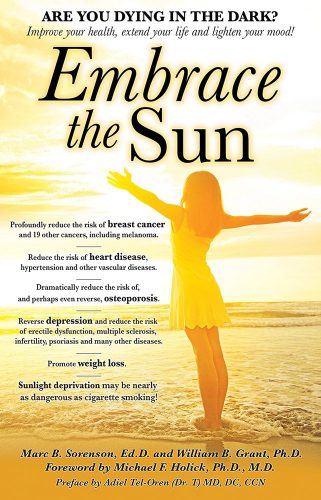 on-burning fashion. If the sun is not available, use a sunbed in non-burning fashion. Stop the flu before it stops us! Happy sunning!
on-burning fashion. If the sun is not available, use a sunbed in non-burning fashion. Stop the flu before it stops us! Happy sunning!